17. Excluding the round, please rank the most popular diamond shape you sold last year.
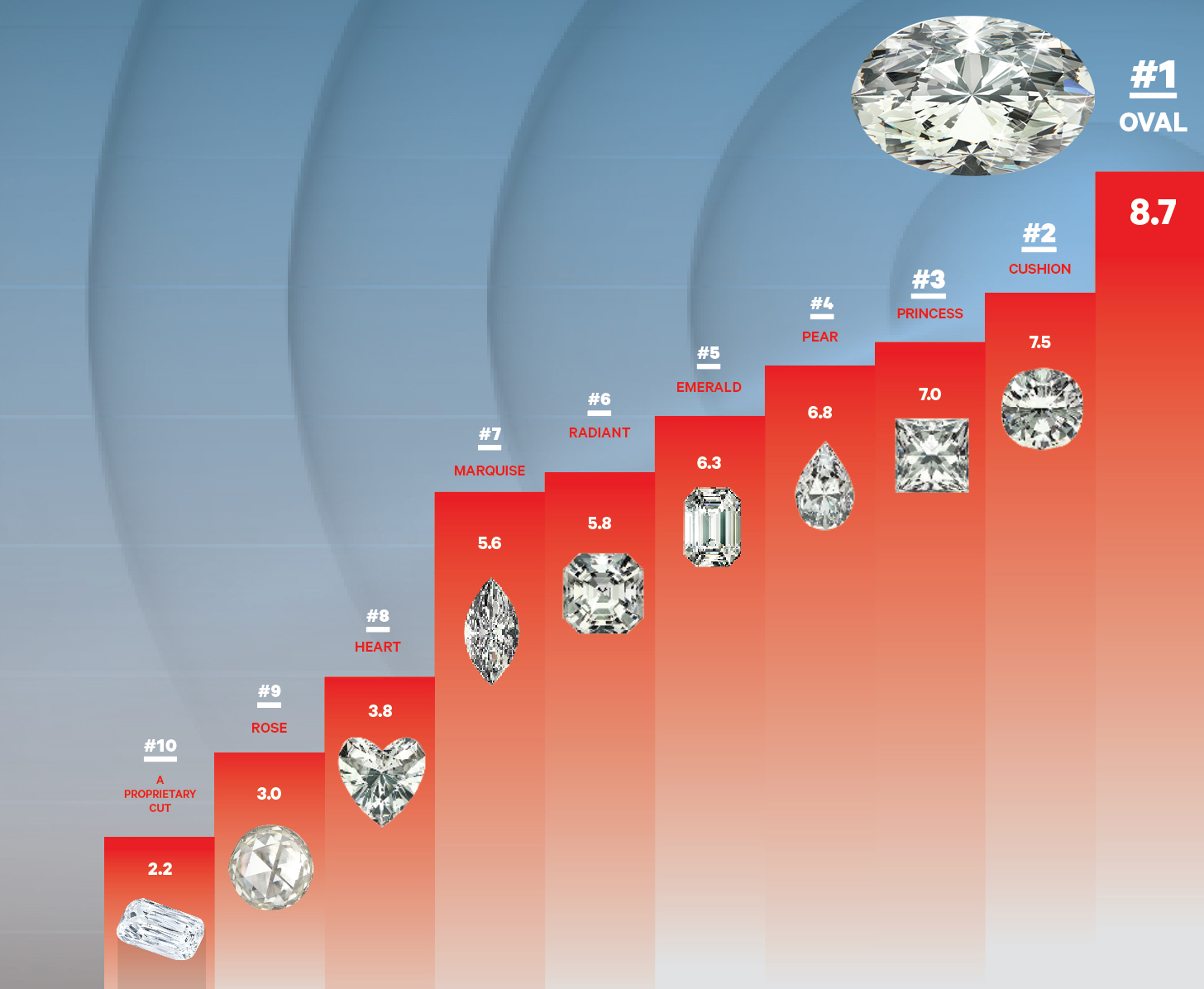
18. For every 100 engagement/wedding rings you sell, how many do you sell in each metal type?
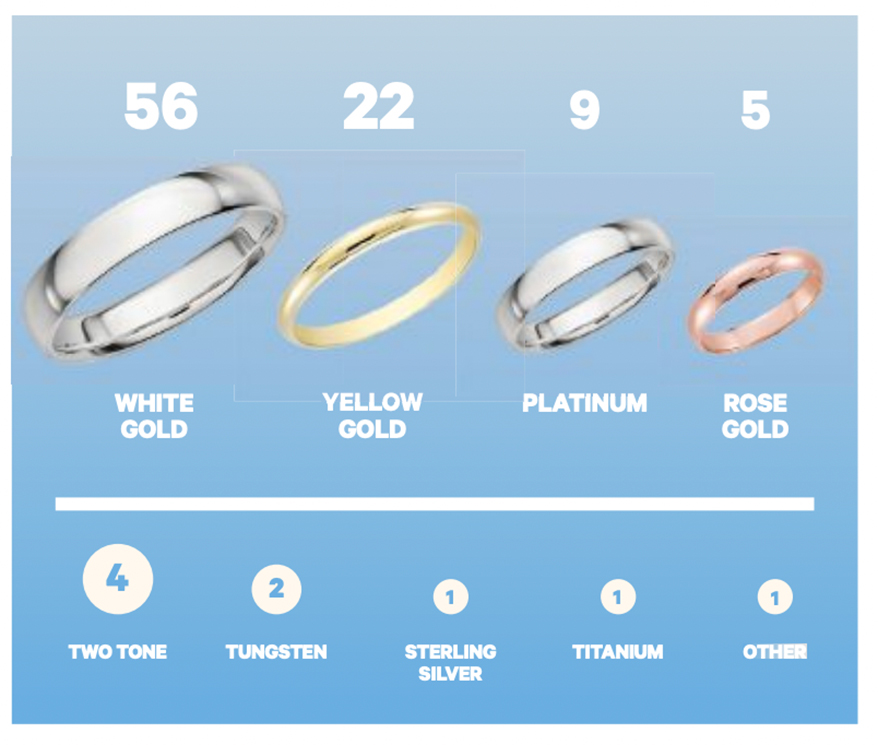
19. On average, how many customers walk in your door every day?
0-5
|
|
8%
|
| 5-9 |
|
14%
|
| 10-14 |
|
25%
|
| 15-19 |
|
15%
|
| 20-29 |
|
18%
|
| 30-49 |
|
11%
|
50-75
|
|
3%
|
More than 75
|
|
2%
|
Don’t Know
|
|
3%
|
N/A
|
|
1%
|
20. On average, how many people visit your website every day?
1-9
|
|
17%
|
| 10-24 |
|
23%
|
| 25-49 |
|
16%
|
| 50-100 |
|
9%
|
| More than 100 |
|
7%
|
| Don’t Know |
|
24%
|
N/A
|
|
4%
|
21. How many vendors do you carry?
We carry only our
own products
|
|
7%
|
| 1-5 |
|
18%
|
| 6-10 |
|
27%
|
| 11-20 |
|
25%
|
| 21-30 |
|
10%
|
| 31-40 |
|
7%
|
More than 40
|
|
6%
|
NOTE: Take on too many vendors and it’s hard to develop a true partnership. Too few and your selection may look thin. “Six to 20 is appropriate,” says store consultant David Geller. “Each store might have in bridal five vendors, then wedding bands, then silver.”
Advertisement
22. When you take on a new vendor, what is your typical starting investment?
Less than $5,000
|
|
35%
|
| $5,000 to $10,000 |
|
33%
|
| $10,000 to $20,000 |
|
18%
|
| $20,000 to $50,000 |
|
12%
|
| More than $50,000 |
|
2%
|
23. How many days do you promise to turn around a repair during “normal” periods of the year?
1 or 2
|
|
4%
|
| 3-7 |
|
48%
|
| 8-14 |
|
39%
|
| 15 or more |
|
7%
|
No promises. It’ll get done
when it’s done. |
|
1%
|
| Don’t do repairs |
|
1%
|
NOTE: The figures indicate most jewelers turn repairs around in one to two weeks says Geller, adding “That was mine as well.” Faster than a week, however, can give you a nice competitive advantage, noted one jeweler.
24. Rank how you discover “new” products:
#1 Trade shows (3.8)*
#2 Trade magazines (3.5)
#3 Brand and distributor reps (3.0)
#4 Social media groups (2.9)
#5 Meet-ups with other jewelers (association events, Lions, etc) (2.3)
*weighted average
25. During the holiday season, do you..
YES / NO
Hold a holiday season party
|
|
51%
|
|
|
49%
|
| Hire extra staff |
|
66%
|
|
|
34%
|
| Extend store hours |
|
74%
|
|
|
26%
|
| Open on Sundays |
|
51%
|
|
|
49%
|
| Offer express custom service with an extra fee |
|
54%
|
|
|
46%
|
| Offer private appointments |
|
77%
|
|
|
23%
|
| Do house calls |
|
63%
|
|
|
37%
|
| Offer free gift-wrapping |
|
94%
|
|
|
11%
|
26. Please rank the following forms of payment, from most frequently used (10) to least used (1).
#1 Credit cards (7.2)*
#2 Debit cards (6.6)
#3 Cash (5.6)
#4 Layaway (4.1)
#5 Apple Pay or some other cardless, phone-based app like PayPal or Stripe (4.1)
#6 Gift cards (3.5)
#7 Store credit line (3.2)
#8 Buy now, pay later app(2.9)
*weighted average
27. Imagine you traveled back in time 25 years. What would be the first thing that would alert you that you were in a jewelry store in 1997?
Most respondents agreed they would be likely to encounter a high degree of formality, both in staff attire (suits) and décor (dark wood). As for inventory, they’d expect to find: gold chains, marquise diamond engagement rings, gold nuggets, slide bracelets, the Y-necklaces popularized by the TV show “Friends,” bridal giftware, Swatch watches and cocktail rings.
But one respondent said that little has changed in 25 years: “Most stores have the same wood/glass showcases with salespeople standing behind them. Old carpet, slow, boring mood music. Our industry has a real problem: individual owners can’t afford to make their stores look like trendy retail shops.”
- The staff was dressed in suits and dresses with pantyhose. People would be smoking in the store. There would be no food or drinks allowed. There would be a traveling restyle show going on up front where customers could watch.
- The first major difference would be flashy yellow gold jewelry and heavy chains.
- The price of gold? The big hair? Shoulder pads? Or was that the ’80s?
- Colored stones mixed together like a clown.
- Jewelry cases lined up on both sides with an aisle in the center.
- The hushed atmosphere, deep carpet and ticking clocks.
- A well-dressed salesman approaches immediately.
- A class ring display.
- Pink velvet showcase displays.
- Very bright lights, big cases and in a mall. a Wood paneling.
- Too much inventory.
- Wall to wall carpeting.
- A feeling of acute depression.
Advertisement
28. A customer comes in and asks for one of the following. Do you charge her or give it away as a customer service?
David Geller feels that while a cleaning can be free since it doesn’t take skill, retailers should be charging for anything that requires a trained jeweler, particularly straightening a prong: “There is a big risk; you could chip a stone in the process. You also have to polish the ring once you’re done.”
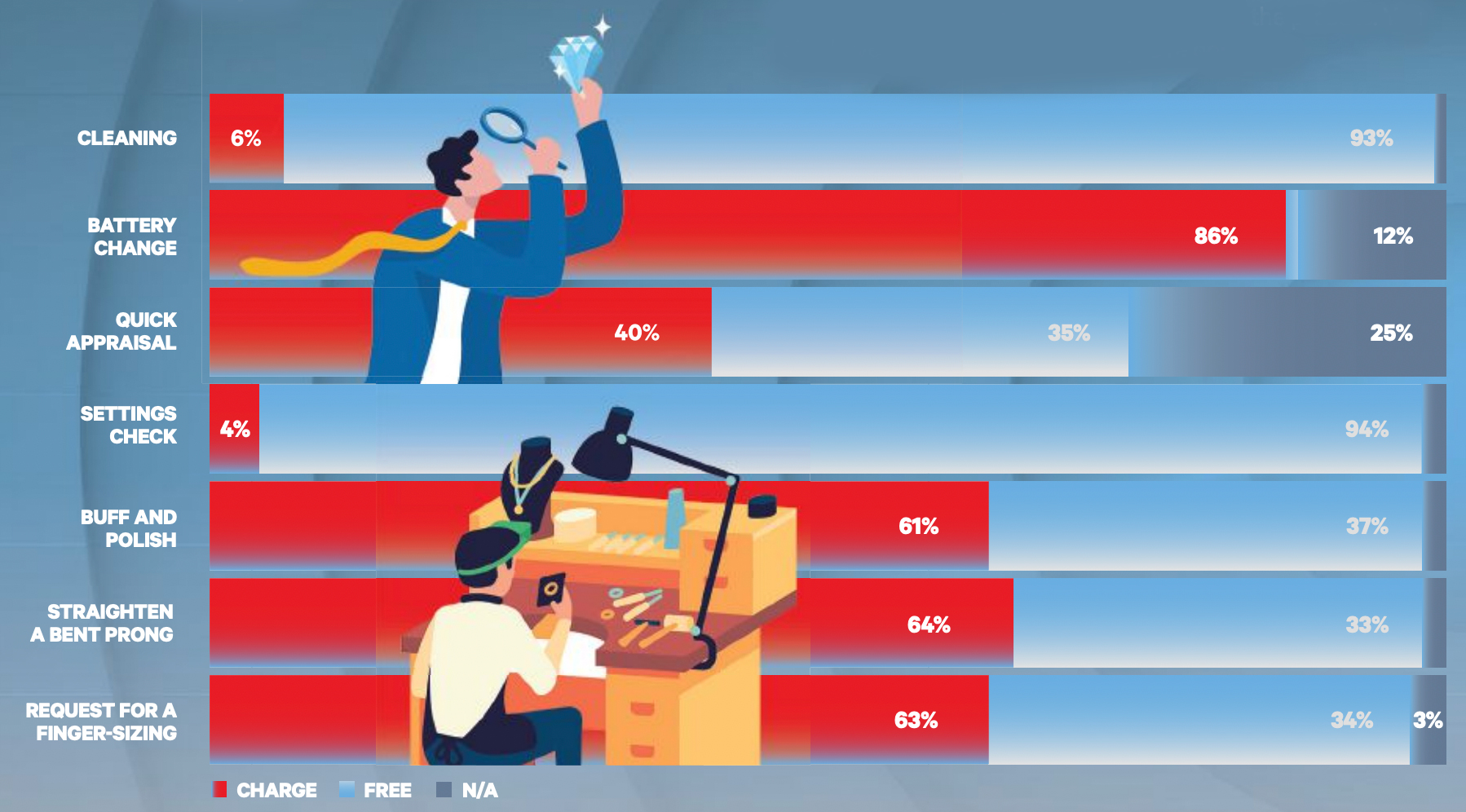
29. Roughly how much is your average markup on estate or vintage jewelry?
25% or less
|
|
5%
|
| 50% |
|
9%
|
| 75% |
|
6%
|
| 100% |
|
17%
|
| 150% |
|
9%
|
| 200% |
|
7%
|
| 300% |
|
6%
|
| More than 300% |
|
3%
|
| N/A |
|
28%
|
30. If you carry estate, please rank the vintage jewelry eras that sell best for you, from most popular (1) to least.
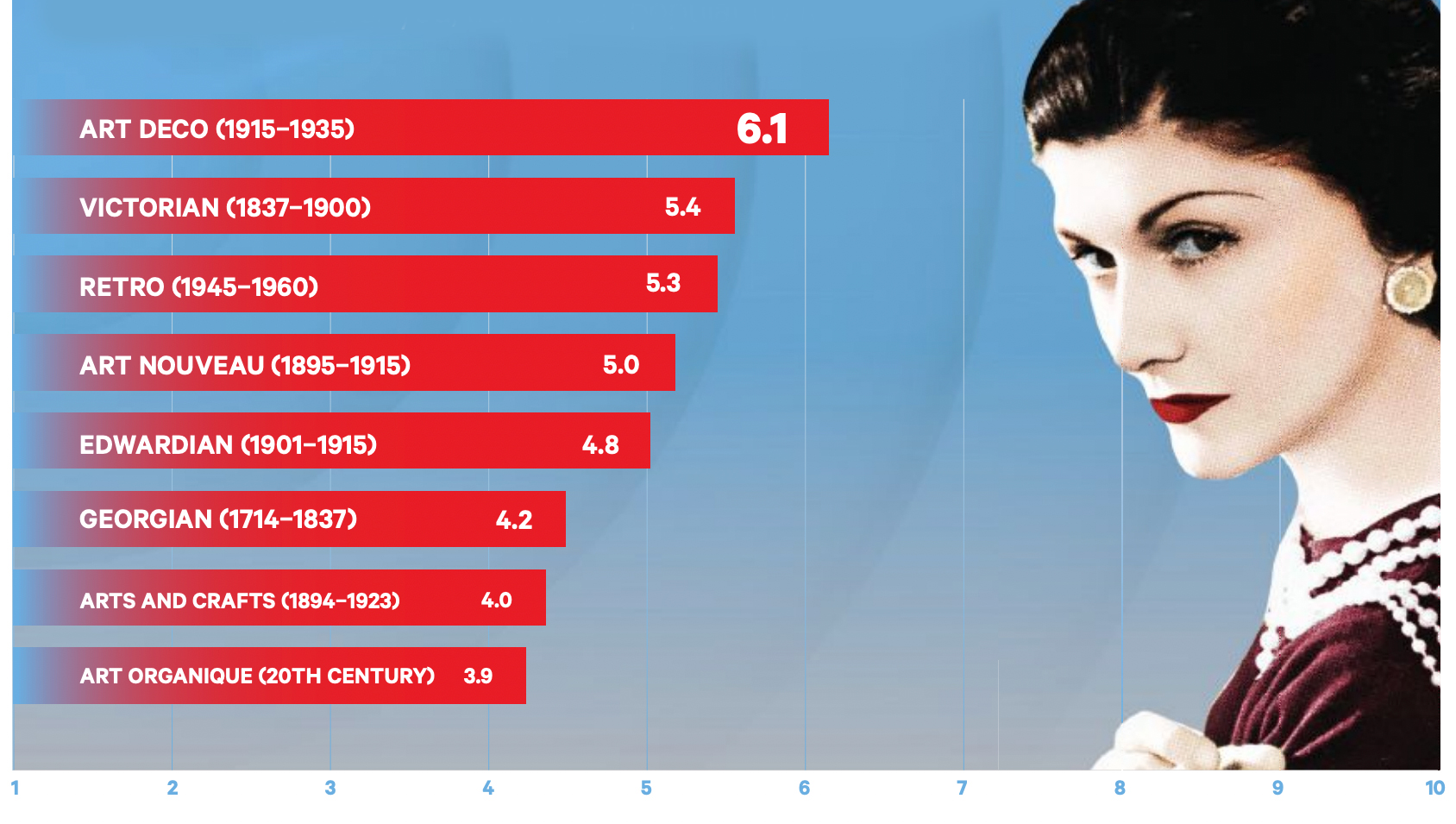
31. Do you sell lab-grown diamonds?
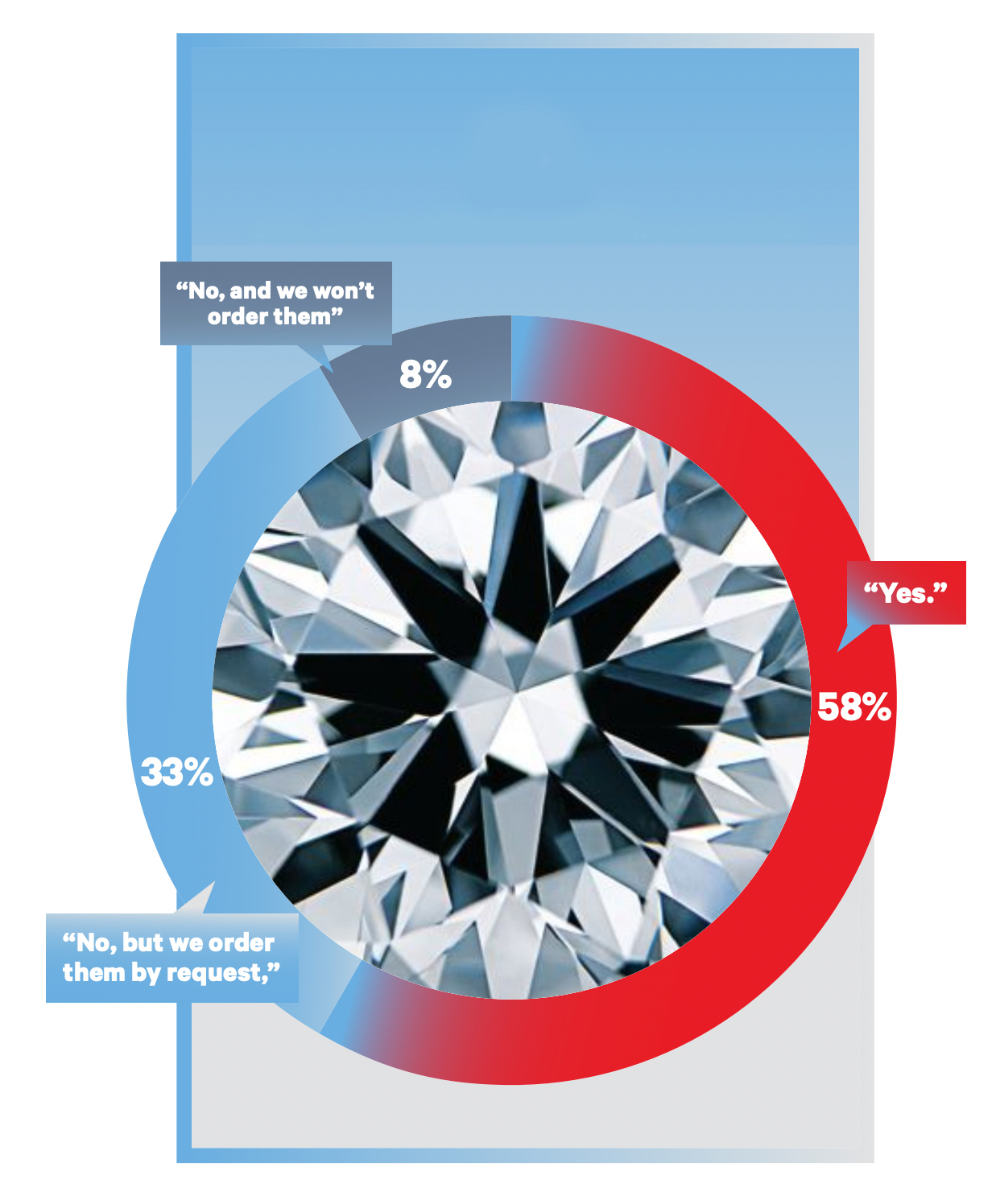
32. Do you give any credit on lab-grown toward a trade-in?
Yes, it’s the same as our policy for natural diamonds
|
|
18%
|
| Yes, but it’s less than for natural diamonds |
|
10%
|
| No, but we offer trade-ins for natural diamonds |
|
44%
|
| No, we don’t offer credit toward any diamonds |
|
14%
|
| N/A |
|
14%
|
33. Of the engagement rings you sell, what percentage have lab-grown center stones?
0%
|
|
15%
|
| Less than 10% |
|
32%
|
| 10-20% |
|
11%
|
| 21-30% |
|
8%
|
| 31-40% |
|
6%
|
| 41-50% |
|
6%
|
| More than 50% |
|
17%
|
| N/A |
|
5%
|
34. Of the diamond jewelry you sell, what percentage include labgrown diamonds?
0%
|
|
33%
|
| Less than 10% |
|
35%
|
| 10-20% |
|
12%
|
| 21-30% |
|
6%
|
| 31-40% |
|
2%
|
| 41-50% |
|
2%
|
| More than 50% |
|
5%
|
| N/A |
|
6%
|
35. If you sell lab-grown diamonds, do you use paid advertising to promote the fact?
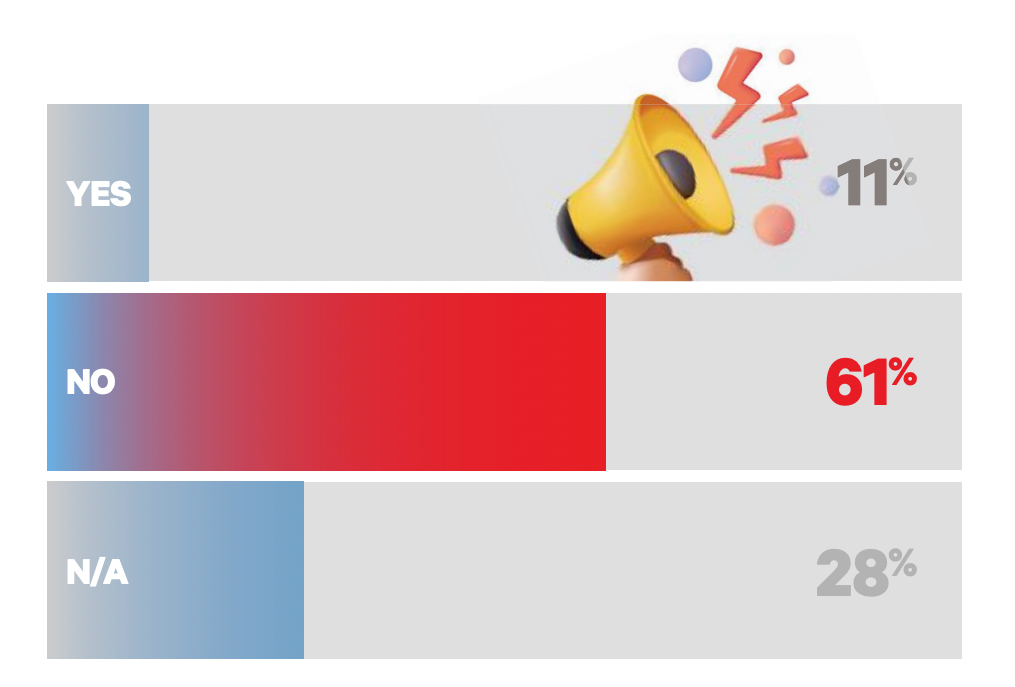
Advertisement